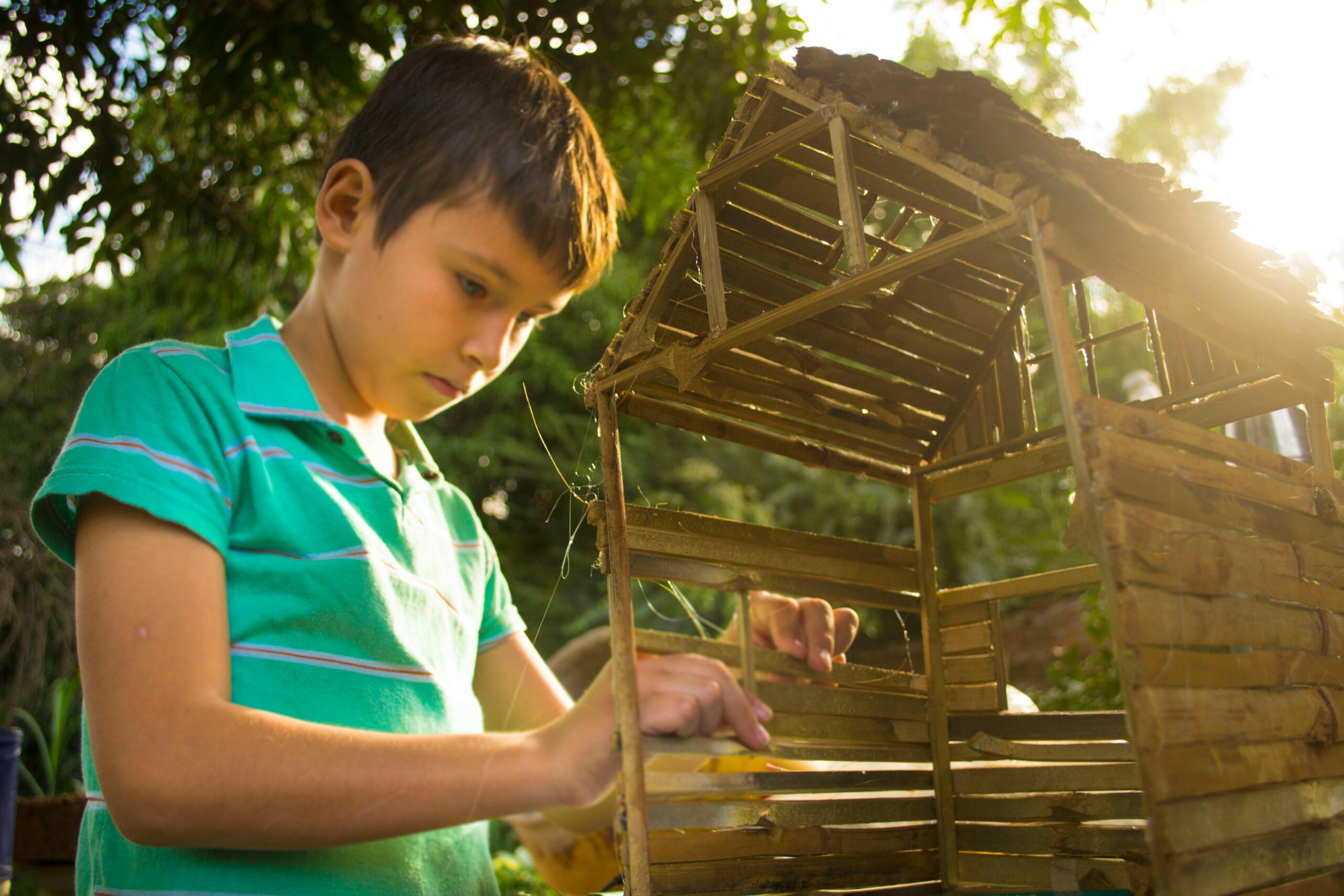What is a Sustainable Low Cost Housing Materials?
Sustainable low-cost housing materials are building materials that are affordable, environmentally friendly, and have minimal negative impacts on both human health and the planet.
These low cost housing materials are often sourced locally to reduce transportation costs and carbon emissions.
Here are some examples:
1. Bamboo:
Bamboo is a fast-growing and renewable resource that can be used for structural elements, flooring, and walls.
It’s lightweight, durable, and has a low environmental impact.
2. Adobe:
Adobe is a mixture of clay, sand, straw, and water that is molded into bricks and dried in the sun.
It’s an ancient building material that is low-cost, energy-efficient, and provides good insulation.
3. Rammed Earth:
Rammed earth construction involves compressing a mixture of soil, gravel, and stabilizers into solid walls.
It’s durable, fire-resistant, and has excellent thermal mass properties.
4. Recycled Materials:
Using recycled materials such as reclaimed wood, salvaged metal, and recycled plastic can reduce waste and lower construction costs.
These low cost housing materials can be repurposed for various building components like roofing, flooring, and insulation.
5. Straw Bale:
Straw bale construction involves stacking straw bales to form walls, which are then plastered with clay or lime-based render.
It’s an affordable and energy-efficient building method that provides excellent insulation and considered as one of the best low cost housing materials.
6. Earthbags:
Earthbags are filled with soil or other locally available materials and stacked to form walls.
They are inexpensive, durable, and resistant to fire, pests, and earthquakes.
7. Ferrocement:
Ferrocement consists of a mesh of steel wires or rods covered with a thin layer of cement mortar.
It’s lightweight, earthquake-resistant, and can be used for roofing, walls, and other structural elements.
8.Cob:
Cob is a mixture of clay, sand, and straw that is hand-formed into thick walls.
One of the low cost housing materials which is inexpensive, energy-efficient, and provides good thermal mass.
A Case of Fly Ash as an Alternate Low Cost Housing Materials in India:
What is Fly Ash?
Pulverized fuel ash commonly known as Fly ash, is comprised of the non-combustible mineral portion of coal.
When coal is consumed in a power plant, it is first ground to the fineness of powder, and its is one of the best alternate low cost housing materials.
Blown into the power plant‘s boiler, the carbon is consumed — leaving molten particles rich in silica, alumina and calcium.
These particles solidify as microscopic, glassy spheres that are collected from the power plant‘s exhaust before they can ―fly away — hence the product‘s name: Fly ash.
Fly ash is a pozzolanic when mixed with lime (calcium hydroxide), pozzolanic combine to form cementitious compounds.
Concrete containing Fly ash becomes stronger, more durable, and more resistant to chemical attack
Background of Indian Population and Their Needs
Population explosion in India has created several problems one of them is housing.
Managing the response to the continuous increasing housing needs of Indian population, has long been a problem for its government.
Providing affordable housing remains a major concern of the government.
Housing shortages have stimulated efforts to develop alternate building materials and construction methods.
To achieve the current housing requirement the scale of economic investment is huge and this will even lead to shortage of conventional building material for construction.
This shortage of conventional building material is aggravating and thus the need for low cost housing materials arises.
The Need for Alternate Building Material – Fly Ash
It also needs to be recognized that the construction industry adversely affects the environment, through physical disruption.
The depletion of key renewable resources like fertile topsoil, forest cover and excessive consumption of energy.
Therefore, there is a strong need to adopt environmentally appropriate materials by up-gradation of the conventional materials.
Due to limited national resources –both financial and conventional building materials, there is a need to use alternative building materials
Fly ash can be used as an alternative material for burnt clay bricks, which is one of the important building materials, used for construction of housing and buildings.
The Fly ash used in concrete, can substitute the conventional building material like Cement and clay bricks in nearly all applications.
Low cost housing may be defined as a provision of housing , which caters to the requirements of masses within their income capabilities, without sacrificing the strength, performance and life of the structure.
Low cost housing materials can reduce construction cost through appropriate use of materials, skills and technology but without sacrificing the performance and structure life.
Low cost housing technologies and to cut down construction cost, and further low cost housing finance policy can provide affordable installments on easy term to support low income group.

